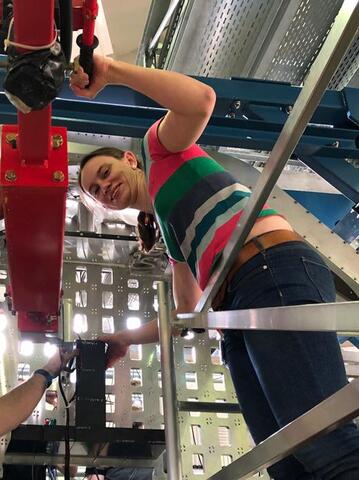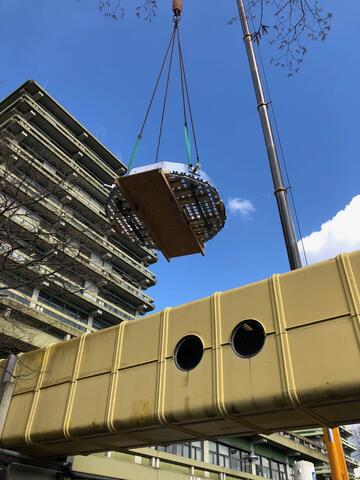Workshop „Physics Opportunities with Proton Beams at SIS100” was held in Wuppertal
PANDA meetings
04/03-08/03 2024 CM 24/1 in Münster
24/06-28/06 2024 CM 24/2 at GSI
25/06-26/06 2024 FEE/DAQ Workshop
04/11-06/11 2024 CM 24/3 at GSI
05/03-07/03 2025 WS at GSI
16/06-20/06 2025 CM 25 in Uppsala
\panda\ at FAIR will address the physics of strangeness in nuclei by several novel and unique measurements. These studies are only made possible by the
one-of-a-kind combination of the stored antiproton beam at FAIR and the modular \panda\ detector which will be complemented by a germanium detector array. The latter was made available by a cooperation with the NUSTAR collaboration.
\begin{itemize}
\item
\panda\ also offers the unique possibility to search for X-rays from very heavy hyperatoms such as e.g. $\Xi^-$-$^{208}$Pb. This will complement experiments at J-PARC which attempt to measure X-rays in light and (possibly) medium-heavy nuclei by the J-PARC E03 and E07 experiments. The measurement at \panda\ will allow to constrain the real and imaginary potential of $\Xi^-$ hyperons in the neutron skin
of the lead nucleus.
\item
\panda\ will extend the studies on double hypernuclei by performing for the first time high resolution $\gamma$-spectroscopy of these nuclei. Thus, \Panda\ complements measurements of ground state masses of double hypernuclei in emulsions at J-PARC conducted by the E07 Collaboration \cite{E07-proposal,doi:10.1142/9789814618229_0025} or the production of excited resonant states in heavy ion reactions which may, for example, be explored in future by the CBM Collaboration. Together, these measurements will provide a as yet unrivaled information on the structure of double $\Lambda\Lambda$ hypernuclei.
\item
Furthermore, the exclusive production of hyperon-antihyperon pairs close to their production threshold in $\Pap$ - nucleus collisions offers a unique and hitherto unexplored opportunity to elucidate the behaviour of antihyperons in cold nuclei which is intimately related to the short-range part of the baryonic interaction.
\end{itemize}
In all these studies, the production of low momentum {\PagL} within nuclei or slow $\Xi^-$ hyperons which can eventually be stopped in a secondary target material play an essential role.
one-of-a-kind combination of the stored antiproton beam at FAIR and the modular \panda\ detector which will be complemented by a germanium detector array. The latter was made available by a cooperation with the NUSTAR collaboration.
\begin{itemize}
\item
\panda\ also offers the unique possibility to search for X-rays from very heavy hyperatoms such as e.g. $\Xi^-$-$^{208}$Pb. This will complement experiments at J-PARC which attempt to measure X-rays in light and (possibly) medium-heavy nuclei by the J-PARC E03 and E07 experiments. The measurement at \panda\ will allow to constrain the real and imaginary potential of $\Xi^-$ hyperons in the neutron skin
of the lead nucleus.
\item
\panda\ will extend the studies on double hypernuclei by performing for the first time high resolution $\gamma$-spectroscopy of these nuclei. Thus, \Panda\ complements measurements of ground state masses of double hypernuclei in emulsions at J-PARC conducted by the E07 Collaboration \cite{E07-proposal,doi:10.1142/9789814618229_0025} or the production of excited resonant states in heavy ion reactions which may, for example, be explored in future by the CBM Collaboration. Together, these measurements will provide a as yet unrivaled information on the structure of double $\Lambda\Lambda$ hypernuclei.
\item
Furthermore, the exclusive production of hyperon-antihyperon pairs close to their production threshold in $\Pap$ - nucleus collisions offers a unique and hitherto unexplored opportunity to elucidate the behaviour of antihyperons in cold nuclei which is intimately related to the short-range part of the baryonic interaction.
\end{itemize}
In all these studies, the production of low momentum {\PagL} within nuclei or slow $\Xi^-$ hyperons which can eventually be stopped in a secondary target material play an essential role.





